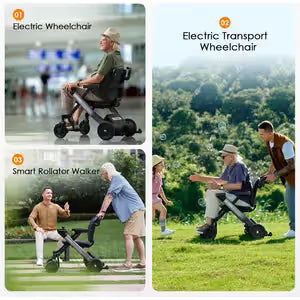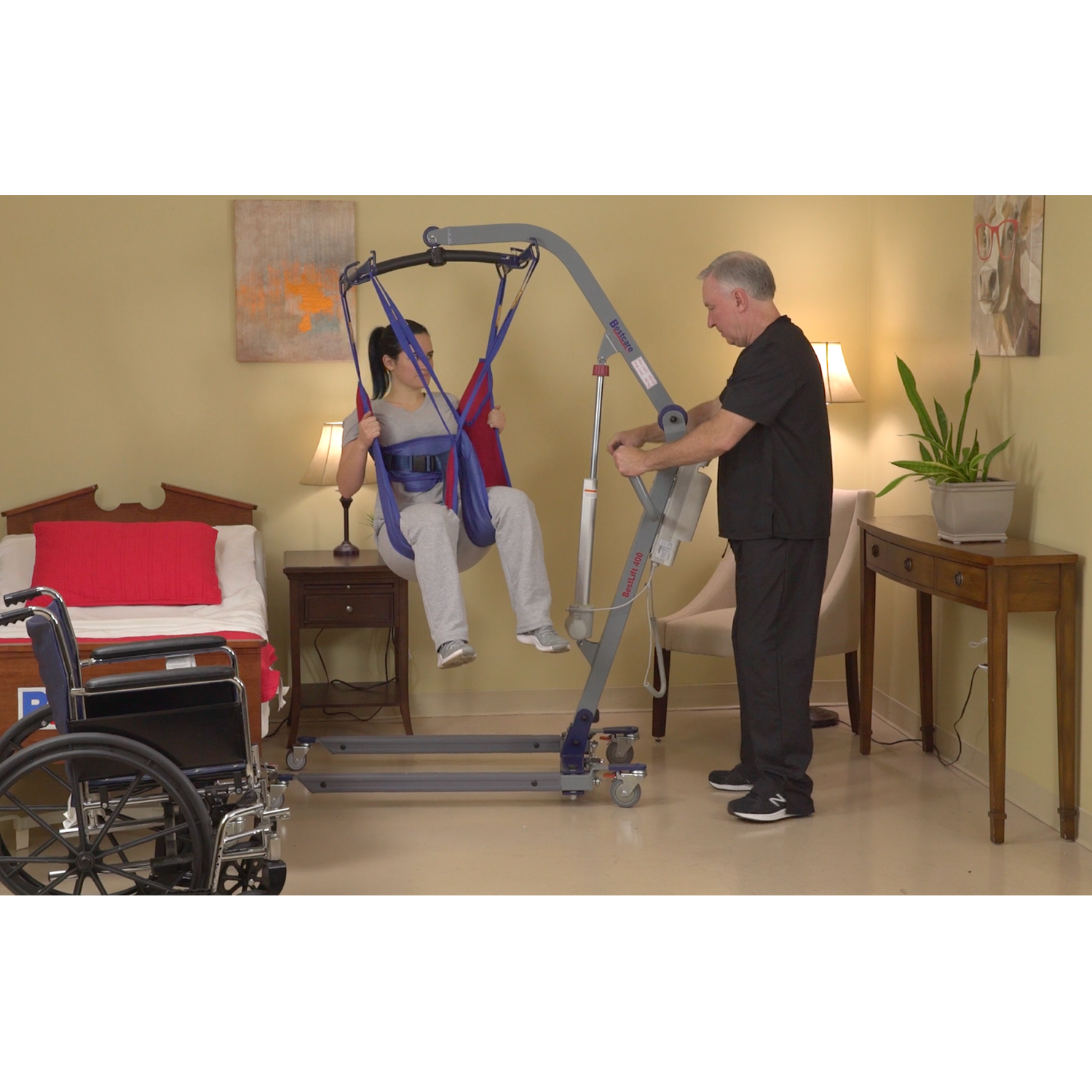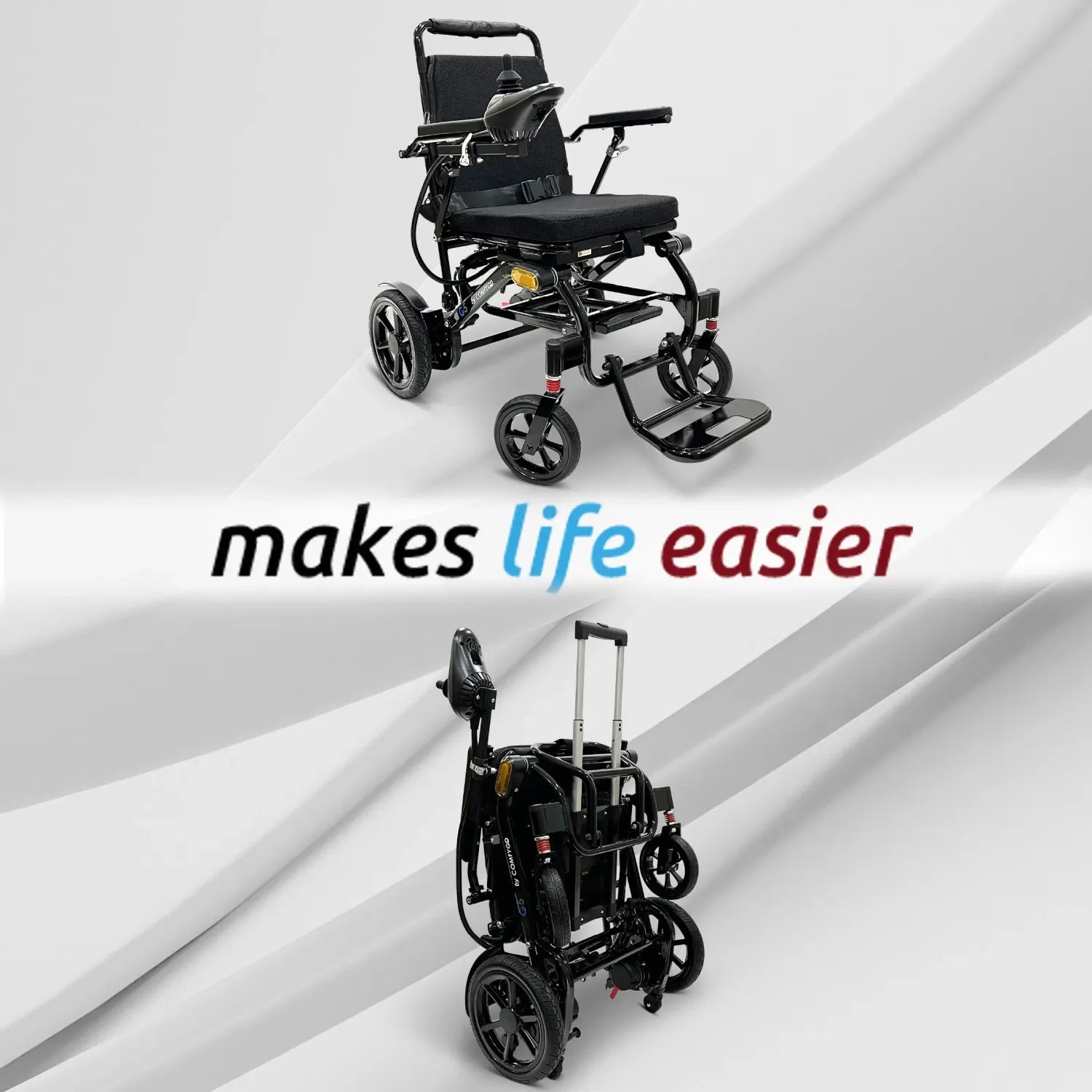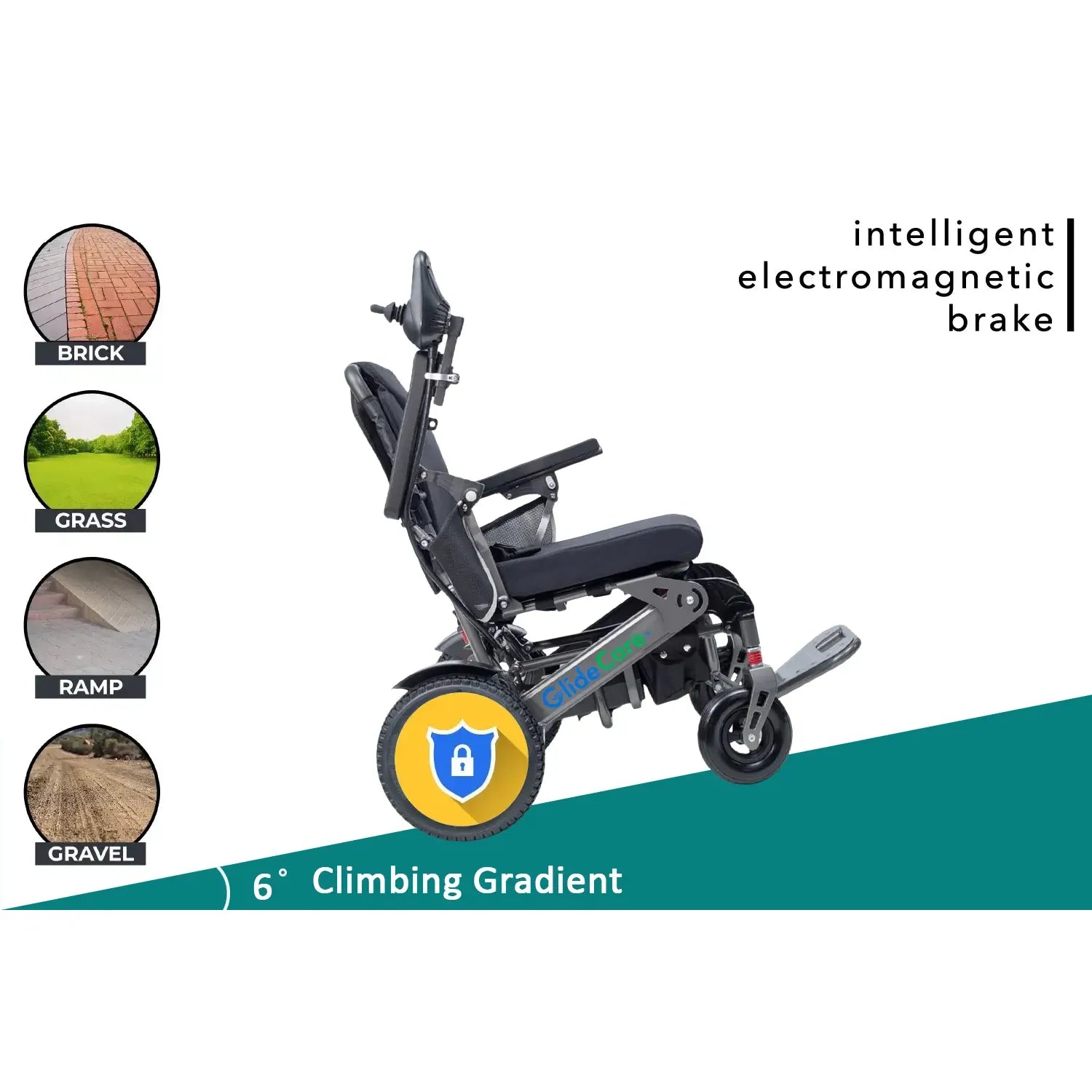The mobility industry stands at the threshold of a transformative revolution comparable to how Tesla disrupted automotive technology. Just as electric vehicles evolved from basic battery-powered transportation into sophisticated, AI-driven machines, heavy duty electric wheelchairs are undergoing a similar metamorphosis that promises to redefine independence, safety, and quality of life for users requiring robust mobility solutions. The convergence of artificial intelligence, advanced sensor technology, extended battery capabilities, and smart home integration is creating heavy duty power wheelchairs that function less as assistive devices and more as intelligent mobility partners.
For individuals requiring heavy duty wheelchairs with weight capacities exceeding 300-450+ pounds, these technological advancements deliver particularly significant benefits—combining the structural reinforcement and durability essential for bariatric applications with cutting-edge features previously available only in standard-capacity models. Understanding these emerging innovations helps users, caregivers, and healthcare professionals make informed decisions about mobility investments that will serve needs for years to come.
Artificial Intelligence: The Brain Behind Next-Generation Wheelchairs
Artificial intelligence represents the most transformative innovation reshaping heavy duty electric wheelchair functionality, fundamentally changing how these devices understand environments, respond to user needs, and operate autonomously.
Machine learning algorithms embedded within modern wheelchair systems continuously analyze user behavior patterns, adapting control sensitivity and navigation preferences based on individual usage over time. For example, if a user frequently travels specific routes—from home to a nearby park or through familiar building corridors—the AI learns these patterns and can suggest or automatically optimize navigation along these established pathways. This predictive capability streamlines the user experience while reducing cognitive load for individuals managing traditional control systems.
Obstacle detection and avoidance utilizing LiDAR, ultrasonic, and infrared sensors enable heavy duty power wheelchairs to identify barriers, walls, pathways, and hazards in real-time. Advanced systems don't simply stop when encountering obstacles—they calculate optimal alternative routes around impediments while maintaining user-intended direction. This sophisticated navigation proves particularly valuable in complex indoor environments like shopping centers, hospitals, or crowded public spaces where manual navigation demands constant vigilance.
Adaptive and collaborative control represents the cutting edge of AI wheelchair innovation. Rather than forcing users to choose between full manual control or complete autonomous operation, next-generation systems blend user input with AI-generated navigation plans. When users actively steer via joystick or alternative controls, the system prioritizes their intentions; when users stop providing directional input, the AI assumes greater navigational responsibility to ensure smooth, safe transit. This collaborative approach increases user trust, reduces fatigue, and creates more intuitive mobility experiences.
Terrain adaptation through AI analysis allows wheelchairs to automatically adjust power distribution, suspension settings, and speed based on detected surface conditions. Transitioning from smooth indoor flooring to outdoor grass, gravel, or uneven pavement triggers real-time system adjustments optimizing performance and comfort. For heavy duty wheelchairs managing substantial user weights, this intelligent terrain responsiveness proves especially critical for maintaining stability and preventing tipping risks.
Extended Range and Revolutionary Battery Technology
Battery technology advancements parallel the significance of AI integration, addressing one of mobility users' most persistent concerns: range anxiety and charging frequency.
Lithium-ion battery evolution has transformed heavy duty electric wheelchair capabilities, with modern systems delivering 20-25+ miles per single charge compared to 8-12 miles typical of older lead-acid battery technology. This extended range enables full-day outings, multi-destination errands, and outdoor adventures without constant charging concerns. For heavy duty applications requiring more powerful motors to manage increased weight capacities, high-capacity lithium-ion batteries provide adequate power reserves without excessive weight penalties.
Fast-charging capabilities reduce downtime substantially, with contemporary systems achieving 80% charge in 2-4 hours compared to 8-12 hours required by traditional batteries. Some emerging designs incorporate rapid-charge technology enabling partial charges sufficient for short trips in under 30 minutes—transforming charging from day-long commitment to convenient pause comparable to smartphone charging.
Regenerative braking systems capture kinetic energy during deceleration and descents, converting it back into stored battery power. While this technology contributes modest range extensions (typically 5-10% depending on usage patterns), it represents the sophisticated engineering approach defining next-generation heavy duty power wheelchair design.
Solar-assisted charging represents an emerging innovation gaining traction by 2030, with prototype systems incorporating solar panels into wheelchair canopies or body panels to supplement battery charging during outdoor use. While unlikely to provide complete power independence, solar assistance could extend range by 10-20% during sunny conditions—meaningful improvements for users maximizing outdoor mobility.
Smart Integration and Connected Health Monitoring
The Internet of Things (IoT) revolution extends to heavy duty electric wheelchairs through comprehensive connectivity enabling unprecedented integration with smartphones, smart homes, and healthcare systems.
Mobile app synchronization allows users and caregivers to monitor battery levels, track maintenance schedules, customize control settings, plan routes, and receive real-time diagnostics through intuitive smartphone interfaces. This connectivity transforms wheelchair management from reactive troubleshooting to proactive maintenance scheduling, potentially preventing breakdowns before they occur.
Voice control and natural language processing enable hands-free wheelchair operation for users with limited hand mobility or those preferring verbal commands. Advanced systems respond to conversational instructions like "take me to the kitchen" or "navigate to the nearest exit," interpreting intent and executing appropriate navigation without requiring traditional joystick manipulation.
Health monitoring integration represents one of the most significant innovations for medical professionals and caregivers. Sensors embedded within heavy duty power wheelchairs track vital signs including heart rate, blood pressure, oxygen saturation, and even blood glucose levels, transmitting this data to healthcare providers for remote monitoring. Machine learning algorithms analyze patterns potentially indicating emerging health concerns, providing early warnings before conditions become critical. This predictive health monitoring proves particularly valuable for users with chronic conditions or those at risk of sudden health events.
Smart home connectivity enables wheelchair users to control lighting, thermostats, door locks, and appliances directly from wheelchair control interfaces or through integrated voice commands. This seamless integration reduces physical barriers and enhances independence by eliminating the need for separate remote controls or mobile devices.
Safety Innovations Protecting Users
Advanced safety features distinguish next-generation heavy duty electric wheelchairs from earlier models, providing multiple protective layers addressing diverse risk scenarios.
Collision avoidance systems utilize 360-degree sensor arrays detecting potential impacts before they occur, automatically engaging brakes or adjusting trajectories to prevent accidents. For heavy duty wheelchairs where momentum and weight create greater collision risks, these automated safety interventions prove especially critical.
Electromagnetic and automatic braking ensures reliable stopping performance on slopes, ramps, and uneven terrain. Advanced systems calculate grade percentages and automatically engage braking force sufficient to prevent runaway scenarios while maintaining comfortable deceleration rates.
Tipping prevention technology monitors wheelchair angle and weight distribution, providing real-time warnings when instability risks emerge. Some systems automatically adjust speed or power distribution to restore stable positioning before tipping occurs. Given the higher center of gravity challenges inherent in heavy duty power wheelchair applications, these stability features deliver meaningful safety improvements.
Emergency alert systems integrated with IoT connectivity automatically notify designated caregivers or emergency contacts when falls occur, prolonged inactivity is detected, or users manually trigger emergency assistance. GPS tracking enables precise location transmission, accelerating emergency response when users cannot communicate verbally.
Customization and Ergonomic Advancements
Modern heavy duty electric wheelchairs prioritize individual customization addressing the reality that mobility needs vary dramatically across users.
Modular seating systems enable extensive adjustments including seat width (20-24+ inches for bariatric applications), depth, height, backrest angle, armrest positioning, and footrest configuration. Advanced models incorporate dynamic seating with programmable tilt, recline, and elevation functions controlled via joystick, touchscreen, or even eye-tracking systems for users with limited mobility.
Pressure relief technology utilizing smart cushions and dynamic positioning helps prevent pressure sores—a serious concern for wheelchair users, particularly those with limited sensation or mobility. Sensors monitor pressure distribution and alert users when repositioning becomes necessary, while some systems automatically initiate subtle position adjustments maintaining healthy circulation.
Suspension systems specifically engineered for heavy duty wheelchair applications absorb impacts from rough terrain, curbs, and obstacles while maintaining stable positioning. Advanced designs incorporate active suspension that adjusts damping rates in real-time based on detected surface conditions.
The Market Evolution and Accessibility Improvements
The global electric wheelchair market demonstrates remarkable growth trajectories reflecting both demographic shifts and technological maturation, with projections estimating market value reaching $13.6 billion by 2035—representing a robust 9.9% compound annual growth rate from 2025 onward. This expansion driven by aging populations, increasing disability prevalence, and growing awareness of electric mobility solutions creates economies of scale making advanced features increasingly accessible across price points.
Cost reductions resulting from manufacturing efficiencies and competitive market dynamics are making sophisticated heavy duty electric wheelchairs available to broader user populations. While premium models featuring complete AI integration and advanced health monitoring command significant investments, mid-range options increasingly incorporate selected smart features at accessible price points.
Insurance coverage expansion reflecting recognition of mobility devices as medical necessities rather than luxury conveniences helps offset costs for eligible users. Advocacy efforts continue pushing for comprehensive coverage including advanced features demonstrably improving outcomes and reducing long-term healthcare costs.
Explore Advanced Heavy Duty Electric Wheelchairs
When seeking cutting-edge heavy duty power wheelchairs combining robust construction with intelligent features, Independent Living Superstore's heavy duty electric wheelchair collection provides expertly curated selections serving diverse mobility needs and budgets. The comprehensive range includes both established models delivering proven reliability and emerging designs incorporating the latest technological innovations discussed throughout this guide.
Each wheelchair receives evaluation ensuring structural integrity appropriate for weight capacities exceeding 300-450+ pounds while incorporating modern features enhancing independence, safety, and comfort. Professional guidance helps match individual requirements with optimal solutions, ensuring investments deliver lasting value and meaningful quality-of-life improvements.
Frequently Asked Questions About Future Heavy Duty Electric Wheelchairs
What weight capacities will future heavy duty electric wheelchairs support?
Contemporary and emerging heavy duty electric wheelchairs support weight capacities ranging from 300 to 600+ pounds depending on specific models and construction. Advanced materials including reinforced steel frames, heavy-duty motors, and enhanced suspension systems enable these substantial capacities while maintaining maneuverability and comfort. Future innovations in lightweight composite materials may enable even higher capacities without proportional weight increases.
How far can AI-powered heavy duty wheelchairs travel on a single charge?
Modern lithium-ion battery technology enables 20-25+ miles per charge, with some premium models achieving 30+ miles under optimal conditions. Actual range varies based on user weight, terrain, speed settings, and accessory usage. Future battery innovations and solar-assisted charging may extend ranges to 40+ miles by 2030.
Are AI navigation features safe for users with cognitive impairments?
Yes—AI navigation systems enhance safety for users across cognitive ability spectrums. Collaborative control systems blend user input with AI guidance, providing appropriate assistance levels based on individual capabilities. For users with severe limitations, full autonomous modes enable mobility with minimal cognitive demands, while adaptive systems adjust assistance levels as user abilities change over time.
Can heavy duty power wheelchairs navigate outdoor terrain?
Advanced heavy duty power wheelchairs feature enhanced suspension, all-terrain tires, and powerful motors enabling navigation across grass, gravel, sand, and moderate trails. AI terrain detection automatically adjusts power distribution and suspension settings optimizing performance on varied surfaces. However, extremely rough terrain, steep grades, or deep water remain beyond most models' capabilities.
How do smart wheelchairs integrate with existing smart home systems?
Contemporary wheelchairs connect via Bluetooth, Wi-Fi, or dedicated protocols compatible with major smart home ecosystems including Amazon Alexa, Google Home, and Apple HomeKit. Users control lights, thermostats, locks, and appliances through wheelchair interfaces or voice commands without requiring separate devices. Integration typically requires initial setup connecting wheelchair systems to home networks and authorizing device access.
What maintenance do advanced electric wheelchairs require?
Smart heavy duty electric wheelchairs require regular maintenance including battery management, tire pressure monitoring, brake adjustments, and software updates. IoT connectivity enables predictive maintenance scheduling with mobile apps alerting users to upcoming service needs before failures occur. Most manufacturers recommend professional servicing annually with routine user checks between professional appointments.
Are voice-controlled wheelchairs reliable for primary navigation?
Voice control technology has advanced substantially, with contemporary natural language processing achieving 95%+ accuracy in optimal conditions. However, most experts recommend voice control as supplementary option rather than exclusive control method, given potential challenges in noisy environments or during respiratory illness affecting speech clarity. Multi-modal control combining voice, joystick, and eye-tracking provides optimal flexibility and reliability.
How quickly is heavy duty electric wheelchair technology advancing?
The mobility industry experiences rapid innovation comparable to consumer electronics, with significant feature additions appearing annually. Major advances including AI integration, extended battery life, and smart connectivity emerged over the past 3-5 years. Projections suggest continued acceleration with autonomous navigation, health monitoring, and solar charging becoming standard features by 2030.
Do insurance providers cover advanced smart wheelchair features?
Coverage varies significantly by provider, plan type, and individual circumstances. Basic electric wheelchairs typically receive coverage when medically necessary, but advanced features like AI navigation or health monitoring may require additional justification demonstrating medical necessity. Documentation from healthcare providers detailing how specific features address medical needs improves approval likelihood. Advocacy organizations assist users navigating coverage challenges.
Embracing the Mobility Revolution
The future of heavy duty electric wheelchairs transcends incremental improvements, representing fundamental transformation in how mobility devices function, interact with users, and integrate with daily life. Just as Tesla revolutionized automotive expectations by demonstrating electric vehicles could surpass traditional cars in performance, intelligence, and user experience, contemporary wheelchair innovations establish new standards for what mobility assistance can achieve.
For individuals requiring heavy duty power wheelchairs, these advancements deliver particularly meaningful benefits—combining the robust construction and weight capacity essential for bariatric applications with sophisticated technologies previously unavailable in reinforced models. The result? Unprecedented independence, safety, and quality of life enabled by intelligent machines that adapt to individual needs rather than forcing users to adapt to device limitations.
As AI continues maturing, battery technology advances, and smart integration expands, heavy duty electric wheelchairs will increasingly function as proactive healthcare partners—monitoring health, preventing accidents, facilitating social connection, and empowering users to pursue activities and aspirations unconstrained by mobility limitations. The mobility revolution is here—and it's transforming lives with every innovation.
Explore the future through Independent Living Superstore's advanced heavy duty electric wheelchair collection, where cutting-edge technology meets proven durability in wheelchairs designed for real-world performance and lasting independence.
 Proudly Service-Disabled Veteran-Owned |
BBB Accredited |
Faith-Driven Values
Proudly Service-Disabled Veteran-Owned |
BBB Accredited |
Faith-Driven Values








Share:
The Role of Patient Lifts in Preventing Injuries During Transfers
How Lightweight Electric Wheelchairs Improve Independence: Real Stories